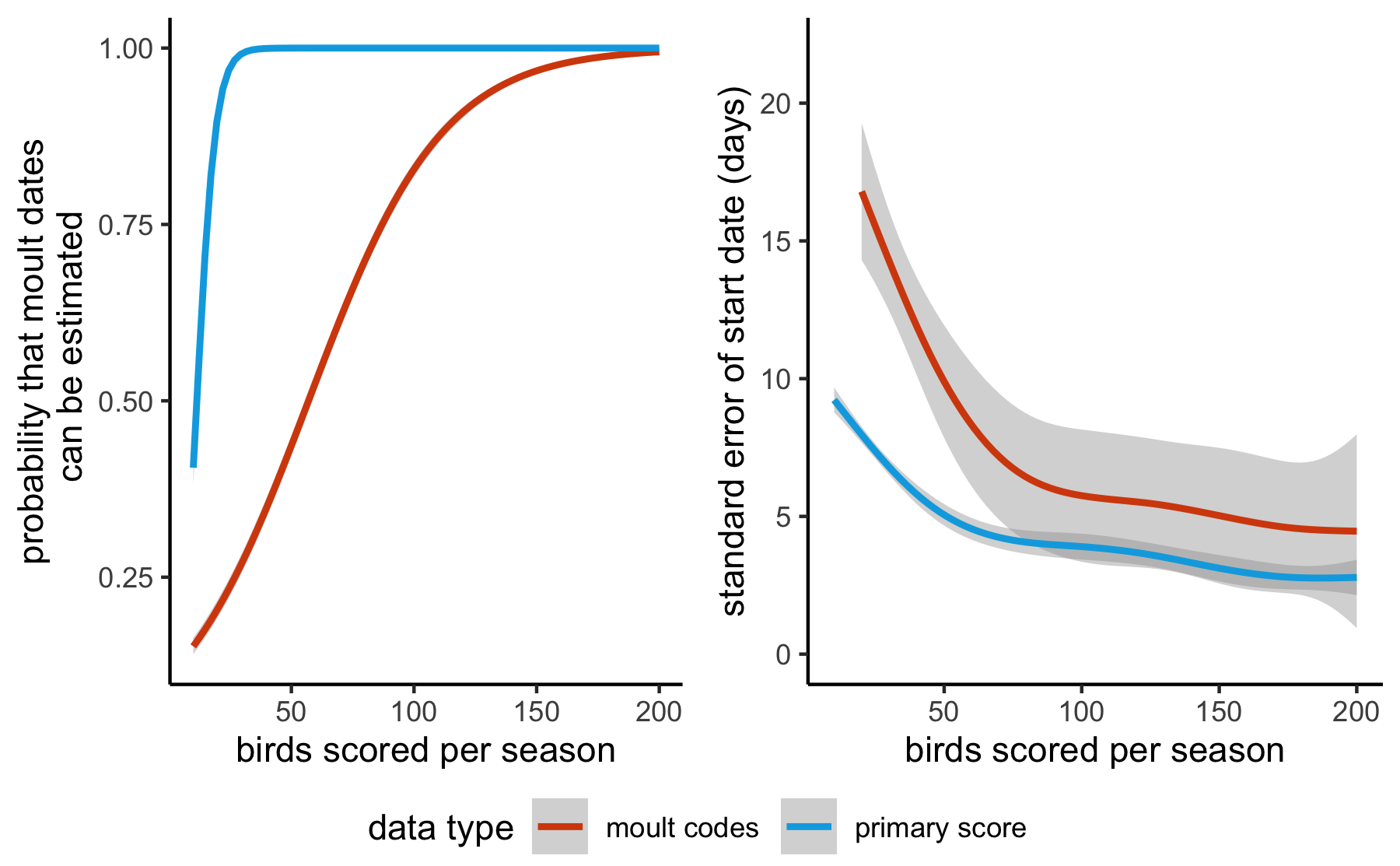Blog post - A feather at a time
01 Jun 2021 Philipp Boersch-Supan citizen science Tweet this!This blog post was originally published in the BTO’s Lifecycle magazine
Most adult birds moult all their feathers once a year, which provides an energetic challenge on a par with reproduction and migration. Despite this, moult has been a neglected subject in ornithology and much remains to be learned about how it fits into the annual cycle of birds. Here I highlight the value of recording scores of individual primary feathers.
Documentation of basic moult data such as the timing, location, sequence, and completeness of feather replacement is crucial for any attempt at unravelling the physiological and environmental causes of moult and how these might differ between species and regions. As changing climates alter birds’ breeding and migration seasons, how is the timing of moult changing? Ringing records provide a critical source of information and we have been looking at how we can best make use of them. Specifically, we are interested in quantifying the variation in passerine moult timing and duration, and investigating potential environmental drivers thereof. Estimating the date when moult starts and how long it lasts in wild bird populations is challenging; usually the full progression cannot be observed in individuals. Rather, we have to infer moult timing across a population from snapshots of different individuals throughout the season that are usually only caught once.
RECORDING MOULT
One of our first insights from this
project is that the way moult is recorded
matters. The guidelines in the Ringers’
Manual allow two types of moult
information. Moult codes consider
moult progression across the entire
bird in broad categories relevant to all
ages, whereas primary scores track the
progression of flight feather moult in
more detail.
SIMULATION
To determine the relative value of these
two approaches, we simulated moult in
a large virtual population of adult birds.
We then sampled this virtual flock as if
we were catching them using different
levels of effort (i.e. numbers of birds
caught over the course of a season) and
noted either the moult code (‘O – old
plumage’, ‘M – active main moult’,
‘N – new plumage following main
moult’) or the scores of the individual
feathers for each (0–5). Finally, we used
a statistical model to estimate moult
timing for each sample. Because we
know how moult progresses in our
simulated population, we can assess
how accurate our statistical estimates
of moult commencement and duration
are using the two recording methods.
Estimating moult dates and
durations is sensitive to when birds are
observed in their moult cycle. Ideally,
records from a season cover birds in
all stages of active moult as well as
those individuals that haven’t started
(code ‘O’, score 0) and those that have
finished (code ‘N’, score 50). We found
that this was particularly important
when using moult codes alone.

Analyses of moult timing (phenology) based on primary scores require a much smaller sample size to yield useful results (left), and deliver date estimates with higher precision, particularly for small sample sizes (right).
RESULTS
On average, a much larger sample of
birds with just a moult code is required
for the phenology model to yield any
results – 50 birds sampled randomly
across the season offers only a 50:50
chance of successfully estimating
moult start date and duration (see
graph). Primary scores hold much
more information, because wing moult
progresses in a near-linear fashion in
many passerines. A random sample
of about 30 scored birds virtually
guarantees reliable estimates of moult
phenology. Further, when estimation
succeeds, the estimated dates and
duration are much more precise for a
given sample size when using primary
scores.
Samples larger than c. 50 individuals
with primary scores yield standard
errors smaller than about five days. For
moult codes, a threefold larger sample
is required to obtain the same level of
precision. Although these numbers
might seem small in a national context,
by the time you start breaking the
sample down by sex, habitat, location…
every record becomes valuable. So, next
time you are processing captured birds
please consider recording a full set of
primary scores, and remember, scores
of pre- and post-moult birds are as
important as those of actively moulting
birds to understand the phenology of
feather replacement.
REFERENCES
Underhill, L. & Zucchini, W. (1988) A model for avian primary moult. Ibis 130, 358–372. DOI
Boersch-Supan, P. et al. (2021) Bayesian inference for models of avian moult timing. Poster presented at EURING 2021. DOI